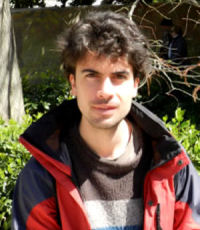
Contacts:
Supervisors:
Benedetta Mennucci
Title:
Multiscale Computational Study of Photoresponsive Proteins.
Abstract:
Photoresponsive proteins are widespread systems in nature that mediates the great majority of interactions between biological systems and light. Generally speaking such structures are composed by one or more relatively small organic molecules, called chromophores, tightly bound to a polypeptide; the role of chromophores is to ‘harvest’ light signals while its connection to the biopolymer allows to propagate the effect of the chromophore excitation to the biological system. Due to their unique characteristics, photoresponsive proteins play crucial roles in processes such as vision, photosynthesis and photopro-tection and have therefore been intensely studied both from a theoretical and experimental point of view.
The interactions of biological matrices with light are intrinsically multiscale phenomena both in space (since the photo-excitation is very localized in a small portion of a very large system, while the following structural changes involves the whole protein) and in time (since the lifetime of an excite state of a chromophore is in the order of fs to ps while the biological response takes place in much longer time, up to ms and s). Therefore very different techniques should be applied and coupled in order to construct consistent theoretical models of these systems and gain insights on their atomistic working mechanism. Particularly the short and localized first interaction with light should be studied considering the quantum nature of the process, and it is mandatory to apply electronic structure techniques and dynamics methods that can deal with quantum effects (such as surface-hopping or multiple spawning). Propagation of the light excitation to the biological matrix, instead, involves very high energy barriers, and therefore long timescale and rare events, but it normally does not involves significant quantum effects. This allow the use of molecular mechanics based dynamics methods that can be modified in order to minimize computational effort needed to simulate the crossing of an high energy barrier, using techniques called enhanced sampling.
The aim of my work is to combine and improve these powerful theoretical models in order to study different biological systems. As a first example I’m currently studying the photoactivation mechanism of Orange Carotenoid Protein.
Publications:
Cupellini L., Bondanza M., Nottoli M., Mennucci B.,
“Successes & challenges in the atomistic modeling of light-harvesting and its photoregulation.”;
BBA Bioenergetics, ASAP, doi: 10.1016/j.bbabio.2019.07.004
Mattia Bondanza, Gennaro Pescitelli, Alessandro Mandoli ,
“Asymmetric organocatalytic α-amination of 2-oxindoles with bis(2,2,2-trichloroethyl)azo-dicarboxylate”;
Tetrahedron Letters, 59 (2018), 2590–2594
Oral communications at congress:
...
Poster communications at congress:
“Orange Carotenoid Protein: From Atomistic Structures to Spectroscopic Properties"
by Bondanza M., Cupellini L., Loco D., Lipparini F. and Mennucci B.
Chemistry for the Future, University of Pisa (IT), July 3-5 2019
“Orange Carotenoid Protein: From Atomistic Structures to Spectroscopic Properties"
by Bondanza M., Cupellini L., Loco D., Lipparini F. and Mennucci B.
International Congress on Photobiology and Congress of the Europen Society for Photobiology, Barcelona (ES), August 15-30 2019

